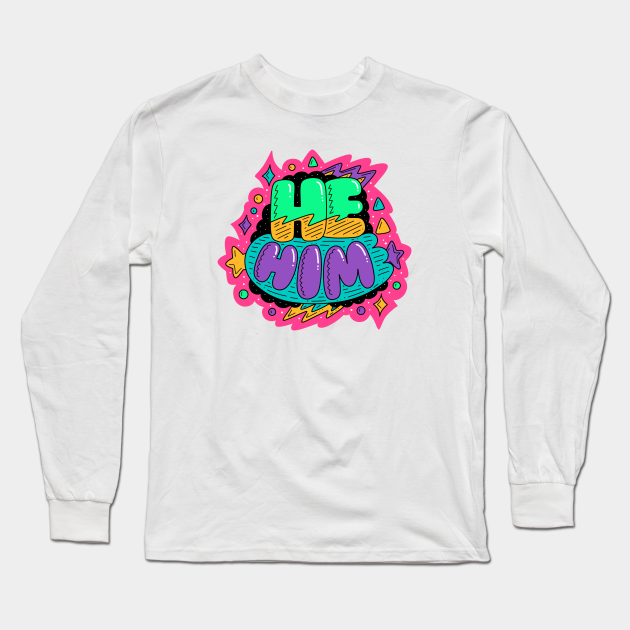

Using pronouns is a key element of being an LGBT+ ally and is something that is effortless to do, but means the world to others.įirstly, change your signatures on emails and your social media bios. “I won’t need to feel like an exception asking for special treatment, but rather I’ll feel accepted and understood.” What can you do? “If everyone makes it a habit to include their pronouns in email signatures and social media bios, then it becomes easier for me, a non-binary person, to let people know my pronouns without any fuss. Prospect member Binni Brynolf, who works as a digital resources librarian and uses pronouns they/them told me
He him pronouns how to#
We must learn how to refer to people in whatever way they see themselves and choose to be seen. It creates a healthier, safe space so everyone can bring their ‘whole self’ to work and be respected for it.Ī second benefit in using pronouns is that it helps avoid getting someone’s gender wrong.Ī final benefit is to support your trans and non-binary workmates and friends by reducing some of the burden on them to continuously explain their identity.

It is an important move towards real inclusivity in the workplace and wider society.

Using your pronouns in signatures and social media biographies tells everyone that you are not going to assume their gender. Non-binary people use they/them to reflect where they are on the gender spectrum.

Non-binary identities are varied and can include people who identify with some aspects of binary identities, while others reject them entirely. Non-binary is a term for people whose gender identity doesn’t sit comfortably with ‘man’ or ‘woman’. Transgender is a term used to describe people whose gender is not the same as, or does not sit comfortably with, the sex they were assigned at birth. Who are the trans and non-binary community? Gender identity is who you are as a person, socially, emotionally and psychologically. Put simply, sex is your physical body or your biology. So, what’s the difference between sex and gender? I use the pronouns she/her to help normalise discussions about gender, especially for the trans and non-binary communities. I’m cisgender, which means I identify with the sex assigned to me at birth. These are a basic set of pronouns and it is becoming more and more common for people to use them, and you don’t have to be LGBT+ to start. Have you seen somebody with he/him, she/her or they/them on their email signature or their social media bio recently?


 0 kommentar(er)
0 kommentar(er)
